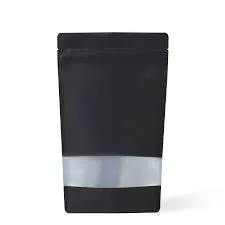- Afrikaans
- Albanian
- Amharic
- Arabic
- Armenian
- Azerbaijani
- Basque
- Belarusian
- Bengali
- Bosnian
- Bulgarian
- Catalan
- Cebuano
- chinese_simplified
- chinese_traditional
- Corsican
- Croatian
- Czech
- Danish
- Dutch
- English
- Esperanto
- Estonian
- Finnish
- French
- Frisian
- Galician
- Georgian
- German
- Greek
- Gujarati
- haitian_creole
- hausa
- hawaiian
- Hebrew
- Hindi
- Miao
- Hungarian
- Icelandic
- igbo
- Indonesian
- irish
- Italian
- Japanese
- Javanese
- Kannada
- kazakh
- Khmer
- Rwandese
- Korean
- Kurdish
- Kyrgyz
- Lao
- Latin
- Latvian
- Lithuanian
- Luxembourgish
- Macedonian
- Malgashi
- Malay
- Malayalam
- Maltese
- Maori
- Marathi
- Mongolian
- Myanmar
- Nepali
- Norwegian
- Norwegian
- Occitan
- Pashto
- Persian
- Polish
- Portuguese
- Punjabi
- Romanian
- Russian
- Samoan
- scottish-gaelic
- Serbian
- Sesotho
- Shona
- Sindhi
- Sinhala
- Slovak
- Slovenian
- Somali
- Spanish
- Sundanese
- Swahili
- Swedish
- Tagalog
- Tajik
- Tamil
- Tatar
- Telugu
- Thai
- Turkish
- Turkmen
- Ukrainian
- Urdu
- Uighur
- Uzbek
- Vietnamese
- Welsh
- Bantu
- Yiddish
- Yoruba
- Zulu
mono material flexible packaging
The Rise of Mono Material Flexible Packaging A Sustainable Solution for the Future
In recent years, the packaging industry has witnessed a significant transformation driven by sustainability concerns, consumer preferences, and regulatory pressures. Among the various trends, mono material flexible packaging has emerged as a leading solution that offers numerous advantages over traditional multi-layered materials. This article explores the definition, benefits, manufacturing processes, and future prospects of mono material flexible packaging.
What is Mono Material Flexible Packaging?
Mono material flexible packaging refers to packaging made from a single type of material, typically plastics such as polyethylene (PE) or polypropylene (PP). Unlike conventional flexible packaging, which often comprises multiple layers of different materials to enhance barrier properties and durability, mono material solutions are designed to simplify recycling and reduce environmental impact. This type of packaging can be produced in various forms, including pouches, bags, and films, making it suitable for a wide range of applications, from food products to personal care items.
Benefits of Mono Material Flexible Packaging
1. Enhanced Recycling Potential One of the most significant advantages of mono material flexible packaging is its recyclability. Traditional multi-layer packages often contain different materials that must be separated before recycling, making the process complicated and less efficient. In contrast, mono material packaging can be processed more easily at recycling facilities, promoting higher recycling rates and reducing landfill waste.
2. Reduced Environmental Impact Using a single material stream allows manufacturers to minimize their carbon footprint and the overall environmental impact of their packaging. By optimizing production processes and utilizing lighter materials, companies can reduce energy consumption during manufacture and transportation, contributing to a greener supply chain.
3. Consumer Appeal Today's consumers are increasingly eco-conscious. They are more likely to support brands that prioritize sustainability in their product offerings. Adopting mono material flexible packaging not only meets this demand but also enhances brand loyalty and consumer trust.
mono material flexible packaging

4. Cost Efficiency While the initial investment in developing mono material flexible packaging may be higher, the long-term cost savings can be substantial. Simplified recycling processes, reduced waste management fees, and the potential for lower material costs can all contribute to overall cost efficiency for manufacturers.
Manufacturing Processes
Manufacturing mono material flexible packaging involves several key processes. Starting with resin selection, manufacturers choose high-quality polyethylene or polypropylene that meets specific performance criteria such as barrier properties and mechanical strength. The chosen resin is then transformed into films through techniques like blown film extrusion or cast film extrusion.
Following film production, additional processes may include printing, laminating, and converting into desired formats such as pouches or bags. It is crucial for manufacturers to ensure that any additives used—such as colorants or barrier enhancers—are compatible with the recycling processes to maintain the sustainability of the final product.
Future Prospects
The future of mono material flexible packaging appears bright, driven by advancements in technology and increasing consumer expectations for sustainability. Innovations in material science are paving the way for new formulations that enhance barrier properties while remaining entirely recyclable. Additionally, collaboration between brands, packaging manufacturers, and recycling facilities is essential to create a circular economy for flexible packaging.
Regulatory frameworks are also evolving, with governments around the world implementing stricter guidelines on packaging waste and recycling requirements. Companies that embrace mono material flexible packaging will be well-positioned to comply with these regulations and meet market demands.
In conclusion, mono material flexible packaging is a sustainable, efficient, and consumer-friendly solution that addresses many of the challenges faced by the traditional packaging industry. As awareness of environmental issues continues to grow, brands that adopt this innovative approach will not only enhance their sustainability credentials but also contribute to a more sustainable future for the packaging sector and beyond. The shift towards mono material solutions is not just a trend; it represents a pivotal change in how we think about packaging, consumption, and waste management in the modern world.













